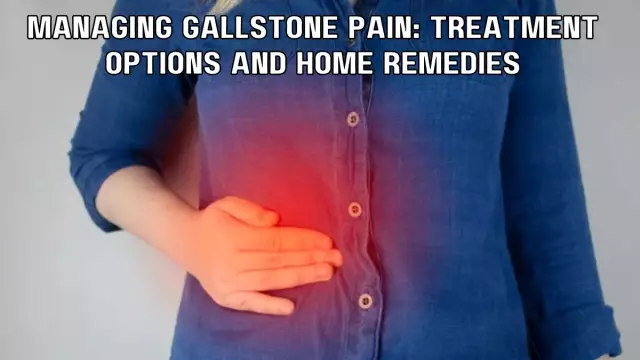- Author Rachel Wainwright [email protected].
- Public 2023-12-15 07:39.
- Last modified 2025-11-02 20:14.
Cholelithiasis

The name of gallstone disease speaks for itself and denotes a pathological condition of the biliary tract with the formation of sand and stones in them - at the beginning of the disease, until they are completely obstructed - at the final stage. Insidious gallstone disease usually does not betray its presence in the body when the process of "stone formation" is just beginning. It will take more than one year after the first stone, invisible to the eye, appears in the gallbladder and until a person experiences a painful attack of gallstone disease for the first time.
Therefore, it is so important for everyone to know about the nature of the occurrence of gallstone disease and the potential causes that provoke it, after all, a warned person, as you know, is not unarmed.
Causes of gallstone disease
You can often hear how gallstone disease is called the disease of wealthy people. It is difficult to call the life of our compatriots prosperous, but, nevertheless, only according to official statistics, a fifth of Russians carry in the right hypochondrium of various sizes a “treasure” consisting of different-sized and multi-colored stones. This fact is explained, of course, not by well-being, but by the peculiarities of unhealthy nutrition and lifestyle. It is just a large number of stressful situations that makes our fellow citizens "seize" their anxieties with fatty, fried, cholesterol-rich foods. And an excess of cholesterol, along with poor ecology and heredity, leads to the fact that the normal functioning of the gallbladder is disrupted and the development of gallstone disease is provoked.
Along with a monotonous diet, a sedentary lifestyle also contributes to the onset of gallstone disease. Due to a lack of physical activity and a mostly sedentary mode of life, bile stagnates in the gallbladder and its ducts, and crystals of cholesterol, calcium, phosphoric, carbonic and other acids are formed in it. Indispensable participants in gallstone formation are various pigments, in particular, bilirubin. It is the pigments that are responsible for giving gallstones the most varied, sometimes quite bizarre colors.
Diagnostics of the gallstone disease

Not a single experienced specialist will be able to give an unambiguous assessment of the state of the body and make a clinical diagnosis of gallstone disease, based solely on the patient's complaints. Moreover, with attacks of gallstone disease, individual sensations can be very specific. From complaints of severe heart attacks, to an unreasonable stool disorder. Some patients are worried about the symptom of an irritated stomach, a feeling of heaviness, heartburn, and at the same time there is completely no pain in the right hypochondrium.
With the regular manifestation of paroxysmal pain after a malnutrition (intake of fatty, fried foods), often occurring nausea, vomiting, bloating, it is necessary, without delay, to do an ultrasound examination of the liver, gallbladder and bile ducts. If calcium stones are suspected, your doctor may advise you to take an abdominal x-ray. In a number of cases, gallstone disease, and in an extremely advanced stage, is diagnosed quite by accident in the complete absence of clinical symptoms and any complaints from the patient during a routine medical examination of the body.
Symptoms of gallstone disease
It is almost impossible to notice the beginning of the formation of gallstone disease. The primary stage of the disease is completely asymptomatic and the patient can detect the first significant pain sensations decades after the formation of the first stone.
The main symptoms of gallstone disease, which should cause you good reason for suspicion, include pain in the right side and in the lumbar region, a regularly occurring bitter taste in the mouth, a yellowish tinge of the skin and eyeballs.
Often, an attack of gallstone disease due to similar painful sensations is confused with an attack of angina pectoris or stomach pain, but with careful attention to your body, they can be distinguished from each other. With gallstone disease, pain appears, as a rule, an hour or half an hour after eating. When you press on the right hypochondrium, the pain increases significantly, especially if palpation is made while inhaling.
Frequent symptoms of gallstone disease are seemingly unreasonable indigestion and bloating.
Treatment of gallstone disease
Methods for treating gallstone disease directly depend on the stage in which the disease is. Launched gallstone disease, which entered in its course before the onset of acute attacks - biliary colic, unfortunately, cannot be treated with folk remedies, and you greatly risk not only your health, but also your life by self-medication.

Knowing and realizing the fact that you carry stones in your gallbladder that can clog the bile duct at any time, in case of an acute attack of gallstone disease, try to summon up your courage to react to what is happening correctly. If the pain is intense enough or even moderate, but does not go away within an hour, call an ambulance or, if possible, go to a medical facility yourself for help. If the pain is unbearable, it is possible to take papaverine or no-shpa (1-2 tablets).
At the initial stage of gallstone disease, one can consider some measures taken independently, rather as a means of prevention, rather than full disposal of it. First of all, as one of such measures, it is possible to recommend adherence to a special diet for gallstone disease, which will prevent the formation of new stones in the gallbladder. In addition, properly organized nutrition in case of gallstone disease will contribute to the natural dissolution and gradual elimination of existing small stones and sand from the body. In the case of particularly large stones, the treatment of gallstone disease only with the help of a diet will definitely be ineffective, and in such a situation, it is most often about their prompt removal.
YouTube video related to the article:
The information is generalized and provided for informational purposes only. At the first sign of illness, see your doctor. Self-medication is hazardous to health!






